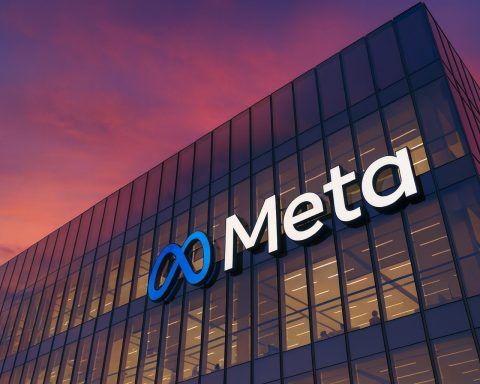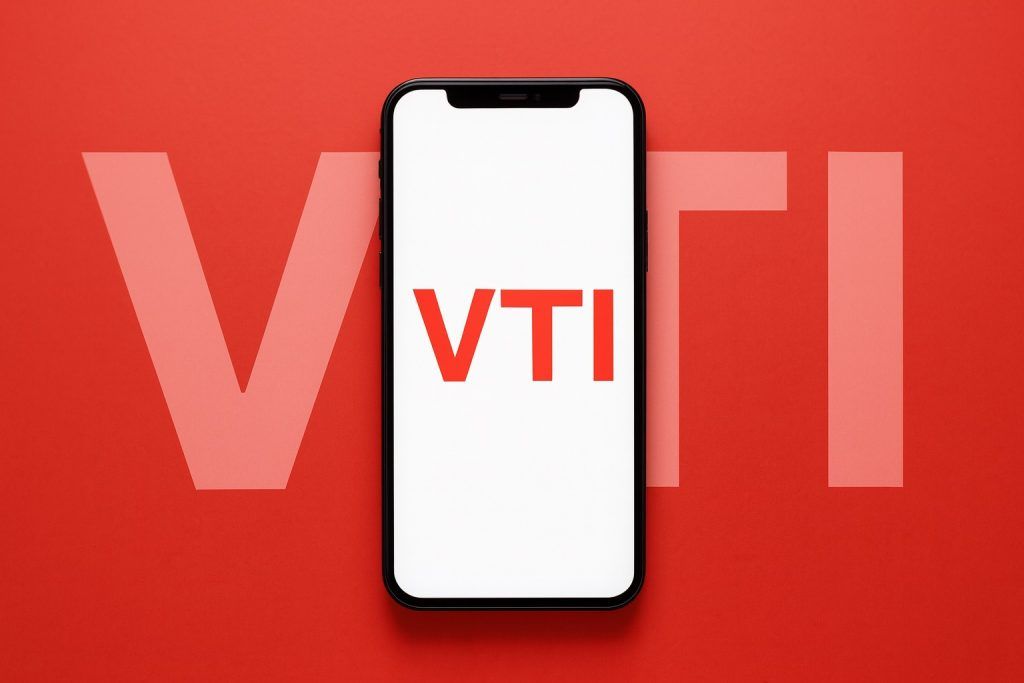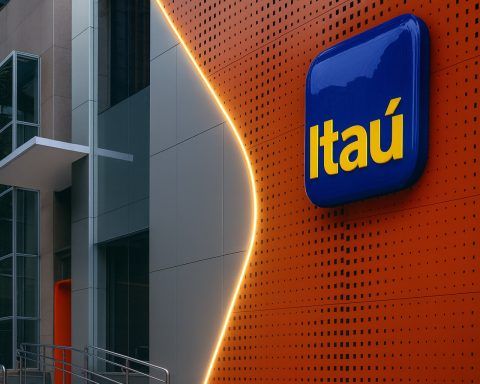Oracle Corporation’s stock remains in the spotlight on November 18, 2025, as investors digest a packed mix of headlines: a sharply repriced $300 billion OpenAI cloud deal, fresh concerns about debt-fueled AI spending, a new AI-powered electronic health record (EHR) milestone, and the company’s 2025 Annual Meeting of Stockholders.
Oracle stock today: price action and market snapshot
As of late-morning trading on Tuesday, November 18, 2025, Oracle (NYSE: ORCL) shares are trading around $216, down roughly 1.8–1.9% from Monday’s close near $220. That move echoes figures reported by MarketBeat, which notes Oracle trading around $215.97, down about $3.90 on the day, on lighter-than-average volume. [1]
Key trading stats today:
- Intraday range: roughly $215–$220
- Previous close (Nov. 17, 2025):$219.86 [2]
- 12‑month range: about $118.86 to $345.72 [3]
- Market cap: around $620+ billion, depending on the data source and intraday price [4]
Despite today’s drop, Oracle is still up solidly year-to-date (YTD return in the low 30% range), but that performance hides a violent 25%+ slide over roughly the last month from record highs near $345 in early September, as detailed by The Economic Times. [5]
Today’s weakness is occurring against a broadly risk-off backdrop: all three major U.S. indexes are down about 1–1.5% for a second straight day, with investors reassessing AI-related valuations across mega-cap tech. [6]
From AI hero to under pressure: how Oracle got here
Oracle spent much of 2025 as one of Wall Street’s AI darlings. A September 11 Reuters analysis highlighted a stunning one-day 36% surge in Oracle’s stock after management pointed to huge AI-driven cloud demand, briefly lifting its market value to around $922 billion and pushing it into the ranks of the 10 most valuable U.S. companies. [7]
Behind that enthusiasm:
- Oracle inked a multi‑billion‑dollar AI cloud deal (widely reported as more than $30 billion annually) that supercharged expectations around Oracle Cloud Infrastructure (OCI). [8]
- In Q1 FY26, Oracle reported revenue of $14.93 billion, up about 12% year over year, with cloud revenue up 28%, and a massive remaining performance obligation (RPO) of roughly $455 billion, reflecting long-term AI and cloud contracts. [9]
But the same quarter also missed consensus estimates by a hair on both revenue and non‑GAAP EPS, and later commentary revealed that some AI/cloud workloads are running on much thinner margins than investors had hoped. [10]
That combination — spectacular top‑line AI growth but rising doubts about profitability — set the stage for the sharp pullback we’re seeing into mid‑November.
The OpenAI megadeal is being repriced by the market
The most striking narrative today centers on Oracle’s huge cloud partnership with OpenAI.
According to a summary of Financial Times reporting carried by TipRanks, since Oracle announced a roughly $300 billion cloud services deal with OpenAI on September 10, its stock has shed about $374 billion in market value, even as peers’ shares have been broadly flat over the same period. [11]
In other words, what was once seen as a transformative AI win is now, in the market’s eyes, a net negative:
- The headline value of the OpenAI contract is enormous—but so are the capital expenditures required to build and run the data centers and GPU clusters that power it.
- Investors are questioning whether Oracle can earn an adequate return on such aggressive capacity build‑out, especially if much of that capacity is priced aggressively to win marquee deals.
Those concerns are increasingly visible not just in the stock, but in Oracle’s bonds. A Reuters report on November 14 highlighted that Oracle is considering adding about $38 billion in new debt to fund AI infrastructure, on top of roughly $104 billion in existing borrowings. The article notes that certain Oracle bonds have sold off in recent days, pushing their yields higher as credit investors reassess the risk-reward of the company’s AI expansion. [12]
The takeaway: the OpenAI deal is still strategically important, but the market is demanding more clarity on unit economics, payback periods, and long‑term margins.
Fresh headlines on November 18, 2025
1. AI-powered EHR wins ONC certification
On Oracle’s own newswire today, the company announced that Oracle Health’s next-generation electronic health record (EHR) has earned ONC Health IT Certification in the United States, as well as DEA EPCS certification for electronic prescribing of controlled substances. [13]
Key points from the announcement:
- The Oracle Health EHR is described as a cloud-native system with AI embedded across workflows, aimed at reducing administrative burden and surfacing clinical insights in real time.
- Ambulatory clinics across the U.S. can now adopt the platform, using agentic AI features, voice-driven navigation, and contextual recommendations to streamline documentation and care coordination.
- The certifications signal that Oracle’s healthcare technology meets strict federal standards for security, interoperability, and controlled-substance e-prescribing.
From a stock perspective, this is a strategic positive: it reinforces Oracle’s push to make AI a core layer in healthcare workflows, not just infrastructure. It also shows tangible product progress in a heavily regulated vertical, which could support future growth in the Oracle Health segment.
2. 2025 Annual Meeting of Stockholders
Today is also the date of Oracle’s 2025 Annual Meeting of Stockholders, held virtually at 9:00 a.m. Central Time (10:00 a.m. ET). [14]
While full details and shareholder Q&A aren’t yet public, the agenda typically includes:
- Formal votes on board elections and compensation.
- Ratification of auditors.
- Potential discussion of AI strategy, capital allocation, and the leadership transition announced in September.
Back on September 22, Oracle revealed that Clay Magouyrk (former head of OCI) and Mike Sicilia (former head of industry applications) had been promoted to co‑Chief Executive Officers, while long‑time CEO Safra Catz moved to Executive Vice Chair of the board. The company reaffirmed its financial guidance at the time and emphasized that the new co‑CEOs will jointly drive Oracle’s AI infrastructure and applications strategy. [15]
Today’s meeting is the first formal opportunity for shareholders to hear how that dual‑CEO model is working and what it implies for Oracle’s AI roadmap.
3. Analyst action: Baird cuts target, keeps “outperform”
In one of the day’s more notable analyst moves, Robert W. Baird lowered its price target on Oracle from $365 to $315 while maintaining an “outperform” rating. According to MarketBeat, that still implies roughly 45% upside from the stock’s prior close, even after the recent selloff. [16]
The note sits within a broader analyst backdrop:
- Multiple banks, including Mizuho, Stephens, Scotiabank, UBS, Bank of America and others, have raised their targets over recent months as AI optimism surged. [17]
- MarketBeat’s compilation shows 3 “Strong Buy”, 27 “Buy”, 10 “Hold” and 2 “Sell” ratings, for an overall “Moderate Buy” consensus and an average price target around $323–$324 per share. [18]
In essence, Wall Street still likes Oracle, but is recalibrating how much AI risk it is willing to underwrite in the short term.
4. Institutional investors trim positions
Several 13F‑based headlines on November 18 highlight institutional rebalancing:
- Portside Wealth Group LLC trimmed its Oracle stake by about 5.6% in Q2, though ORCL remains its fifth‑largest holding. [19]
- Alberta Investment Management Corp cut its position by 96.7%, retaining just 2,000 shares. [20]
- Frank Rimerman Advisors LLC reduced its holdings by roughly 18.7%, to about $4.1 million worth of Oracle stock. [21]
At the same time, large asset managers like Vanguard and Nuveen remain significant holders and, in some cases, have added to positions, and institutions collectively own around 42%+ of the float. [22]
These filings don’t necessarily mean a collective “vote of no confidence,” but they do underscore a theme: after a massive run‑up and heightened volatility, some professional investors are taking chips off the table.
5. Commentary pieces: “Hold” tones and valuation caution
Several commentary-style articles dropping today and in recent days echo a similar message:
- A Trefis analysis titled “What Is Happening With Oracle Stock?” notes that Oracle’s share price climbed about 40% between May and mid‑November, driven by a 5.8% increase in revenue and a near 39% expansion in its P/E multiple, even as net margins dipped slightly. Trefis highlights the $30B+ AI cloud deal, powerful cloud growth, and the AI World 2025 product lineup — but concludes the stock now looks “relatively expensive.” [23]
- An AInvest piece published this morning, “Assessing Oracle’s Cloud Momentum: Is Now the Right Time to Buy?”, underscores that Oracle’s OCI revenue is projected to grow around 77%, versus about 16% for total revenue, making the company heavily dependent on a single high‑growth segment. With an estimated 3% cloud market share vs. much larger rivals and a premium valuation, the article lands on a “Hold” stance, citing execution risk and capital intensity. [24]
Together, these note that Oracle’s story is still attractive, but the price tag and risk profile have changed.
Valuation check: still priced for hyper‑growth
Across multiple data providers, Oracle’s valuation profile as of today looks roughly like this:
- Trailing P/E: around 50x earnings. [25]
- Price-to-sales (P/S): about 10x. [26]
- Market cap: roughly $620–635 billion, depending on the exact intraday price. [27]
By any historical standard, that’s rich — especially for a company whose latest reported quarter delivered:
- Revenue growth of about 12% year over year,
- Net margin around 21%, and
- Return on equity north of 70%. [28]
Some valuation-focused sites (such as Simply Wall St. and others) argue that Oracle is fully valued or modestly undervalued relative to their fair P/E estimates, while others, like Trefis and AInvest, stress that the stock’s premium multiple leaves limited room for execution missteps. [29]
In plain language: the market is still pricing Oracle as a high‑growth AI platform, not as a mature, ex‑growth software incumbent. That creates upside if the AI thesis plays out, but also downside if margins, cash flows, or AI demand disappoint.
Key risks currently in focus
Based on today’s news flow and recent coverage, investors appear most focused on the following risk factors:
- Debt and balance sheet leverage
- Oracle already carries about $104 billion of debt and is reported to be considering another $38 billion for AI infrastructure build‑out. [30]
- Credit markets have started to price this risk, with yields on some Oracle bonds ticking higher.
- Capital intensity and cloud margins
- Building out AI data centers at hyperscale (GPUs, power, cooling, land, etc.) is extremely expensive.
- Reports suggesting much lower margins in Oracle’s cloud infrastructure business versus rivals like AWS and Azure have raised questions about the profitability of its AI push. [31]
- OpenAI concentration and deal economics
- A single, headline‑grabbing $300B+ contract can be a blessing or a curse: if pricing is tight and utilization lower than expected, returns may lag the hype. [32]
- Competitive pressure in cloud and AI
- Oracle’s ~3% market share in cloud leaves it well behind AWS and Microsoft, and Microsoft’s newly announced mega-deal with Anthropic, supported by Nvidia, shows how competitive the AI infrastructure landscape has become. [33]
- Market‑wide AI valuation reset
- As Investopedia notes, major indexes are selling off for a second day on concerns about stretched AI valuations, hitting names like Nvidia, Microsoft, and other high‑multiple tech leaders. Oracle is caught in that crossfire. [34]
- Leadership transition risk
- While Oracle has kept continuity by elevating internal leaders to co‑CEO roles, any CEO transition raises questions about execution, culture, and strategic focus. [35]
Potential upside catalysts to watch
Despite the pressure, bulls can point to several potential upside drivers:
- Massive AI and cloud backlog: The reported $455B RPO — much of it tied to AI and cloud contracts — suggests multi‑year visibility if Oracle can execute and monetize efficiently. [36]
- Healthcare and industry-specific AI wins: Today’s ONC-certified AI EHR highlights Oracle’s ability to bring domain‑specific AI solutions to regulated industries, which can command premium pricing and sticky revenue. [37]
- Analyst consensus still skewed positive: With a “Moderate Buy” consensus and average price targets comfortably above $300, Wall Street is not abandoning Oracle — it’s re‑sizing expectations. [38]
- Upcoming earnings and guidance (Dec. 8, 2025): Oracle is expected to report its next results around December 8, 2025, which will offer an updated read on AI demand, margins, and capital spending. A positive surprise on free cash flow or cloud profitability could help stabilize the stock. [39]
What today’s moves mean for investors
For anyone following Oracle stock on November 18, 2025, the picture looks like this:
- Story: Oracle remains deeply embedded in the global AI and cloud build‑out, with marquee deals (like OpenAI), fast‑growing cloud revenues, and new AI-heavy products such as the ONC-certified EHR.
- Numbers: Growth is solid but not explosive at the consolidated level (~12% revenue growth), margins are good but under pressure, and the balance sheet is carrying more leverage as AI capex ramps. [40]
- Price: The stock is now well below its early‑September highs but still trades at premium multiples relative to its history and many large‑cap peers. [41]
That combination creates a high‑beta, high‑conviction AI cloud bet rather than a low‑drama, defensive holding. Some analysts (and AI-generated commentary) are leaning toward “Hold / wait for better price”, while others see today’s pullback as an opportunity to accumulate a long‑term AI infrastructure leader at a discount to recent peaks. [42]
If you’re evaluating Oracle for your own portfolio, it’s worth carefully considering:
- Your time horizon (multi‑year AI cycle vs. near‑term volatility),
- Your risk tolerance for leverage and capex‑heavy growth stories, and
- How concentrated you want to be in AI infrastructure versus more diversified tech exposure.
This article is for information and news purposes only and does not constitute investment advice. Before making any trading or investment decisions, consider consulting a qualified financial advisor and reviewing Oracle’s latest SEC filings and official guidance.
References
1. www.marketbeat.com, 2. finance.yahoo.com, 3. www.marketbeat.com, 4. stockanalysis.com, 5. m.economictimes.com, 6. www.investopedia.com, 7. www.reuters.com, 8. www.trefis.com, 9. www.trefis.com, 10. www.marketbeat.com, 11. www.tipranks.com, 12. www.reuters.com, 13. www.oracle.com, 14. www.nasdaq.com, 15. www.stocktitan.net, 16. www.marketbeat.com, 17. www.marketbeat.com, 18. www.marketbeat.com, 19. www.marketbeat.com, 20. www.marketbeat.com, 21. www.marketbeat.com, 22. www.marketbeat.com, 23. www.trefis.com, 24. www.ainvest.com, 25. companiesmarketcap.com, 26. stockanalysis.com, 27. stockanalysis.com, 28. www.marketbeat.com, 29. simplywall.st, 30. www.reuters.com, 31. m.economictimes.com, 32. www.tipranks.com, 33. www.ainvest.com, 34. www.investopedia.com, 35. www.stocktitan.net, 36. www.trefis.com, 37. www.oracle.com, 38. www.marketbeat.com, 39. stockanalysis.com, 40. www.marketbeat.com, 41. companiesmarketcap.com, 42. www.trefis.com









